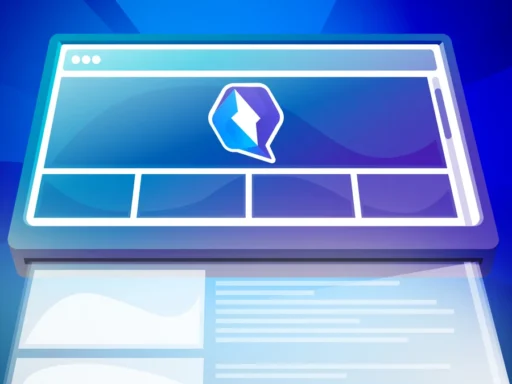(Two lessons to help you overcome the challenges of website localization in English)
Today, many international businesses, organizations, and individuals are finding it necessary to communicate in English. English is now spoken by 1.75 billion people—that’s one in four of us. Having a common language offers us tremendous opportunities to connect with audiences around the globe. But it also means that those who cannot speak English are at risk of being left behind.
When we turn our attention to Slovakia, we clearly see that Slovaks are adapting to this new global standard by increasing the amount of information they share in English. For many Slovak businesses, creating an English website is a necessity, helping you display your products outside of the small Slovak community and increase your potential audience of clients and customers.
However, it’s a mistake to assume that you can simply translate your Slovak text into English, put it up on your website, and consider the job finished. Slovaks must be aware that the content of your new text must meet the preferences of your new audience. If you want to attract and convert new international customers, how you write is just as important as what you write.
Problem – How to create website content that is attention-grabbing (in a good way)
Lesson #1: Businesses communicate differently in Slovak and English
If we briefly compare American and Slovak business attitudes, we see that the American style of business is often more relaxed and outgoing than in Slovakia, where things tend to be more formal and strict. Accordingly, American and Slovak businesses often conduct themselves with these attitudes on their websites.
Slovak businesses must realize that their English-speaking customers will be looking for comfortable, engaging content when they visit your website. They want to read something that feels familiar and trustworthy, and Slovak texts often feel robotic and impersonal when they’re translated directly into English.
Take the following example—a direct translation of this Slovak text would appear too formal for the average American, raising a red flag in their mind about your business:
Slovenčina: Financovanie projektov sa môže realizovať rôznymi spôsobmi.
✖ Direct Translation: The financing of projects may be implemented in different ways.
✔ Targeted Translation: Projects may be financed in different ways.
Customers want authentic English—not an English version of Slovak. Slovak businesses must take this to heart and target their content so that it is read, understood, and valued by their international customers. If your writing allows customers to form a personal connection with your brand, then you’re more likely to be rewarded with their business.
Lesson #2: Automated translating tools cannot be trusted
Tools like Google Translate can be a godsend when you need a quick and easy translation—but they simply can’t be trusted to produce reliable content for your Slovak-to-English translation. Here’s a sentence in Slovak about Košice’s Hlavná ulica run through Google Translate:
Slovenčina: Moje obľúbené miesto v Košiciach je Hlavná ulica.
✖ Google Translate: My favorite place in Kosice main street.
✔ Correct English: My favorite place in Košice is Hlavná Street.
Sure, these mistakes are small, but this is just a simple sentence. This imperfect translation has already missed an opportunity to display a keyword (Hlavná), and its bad grammar will damage your website’s ranking as well as your credibility with potential customers. Imagine translating an entire website this way—your mistakes increasing until your potential customer loses interest, doesn’t trust your company, and ultimately rejects your business.
It’s best to avoid Google Translate for localization projects. Your reputation with customers is based on your appearance, and automated tools just don’t produce English at a professional level. Besides, your customer wants to read something written by a human, not a computer.
Solution – collaborate with a Copy Editor who understands both cultural contexts
Slovak businesses are facing a dilemma: if you’re not a native English speaker, but you have to communicate like one in order to create the best, most competitive website, what can you do?
I’ve created Tatran Editing to solve this exact problem. Tatran Editing is a service that uses editors who are native English speakers with deep personal connections to Slovakia. More culturally conscious than a translator, more reliable than an online tool, and more knowledgeable about Slovakia than an international editing corporation, we correct and improve any text written by Slovaks in English.
Our job is to ensure that our clients’ texts are both grammatically correct and appealing to English speakers worldwide. However, we also work side-by-side with the original Slovak text to make sure that its unique message is maintained and expressed in English. More importantly, Tatran Editing was founded on a belief in the promise of Slovakia, and we’re extremely motivated to help Slovaks share their work around the world.
Milí Slováci: communicate well and show the world what you have to offer!
Andrew Lorraine,
Founder and Chief Editor

Tatran Editing je projekt, ktorého zakladateľom je Andrew Lorraine, Američan s koreňmi na východnom Slovensku. Tento projekt vznikol s cieľom pomáhať Slovákom správne a zrozumiteľne zdieľať svoje skúsenosti s ľuďmi po celom svete, a teraz prácujú so slovenskými organizáciami ako Košice IT Valley Association, Dobrá krajina, a Združenie mladých podnikateľov Slovenska. Andrew prišiel na Slovensko prvýkrát v roku 2012 ako lektor anglického jazyka na Gymnáziu, Park mládeže v Košiciach.
Môžete navštíviť Tatran Editing na Facebooku aj na internete: tatranediting.sk








